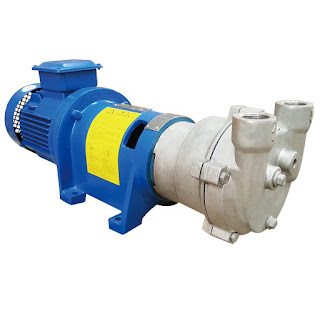Temperature control of vacuum sintering furnace
The vacuum sintering of cemented carbide has strict requirements on temperature. The temperature rise rate of each heating stage should not be too fast, otherwise it will cause cracks and deformation of the product. If the degumming temperature is too high, the degumming will be too fast, and bubbles will be formed. The degumming temperature will be too low. The degumming is not complete; the deoxidation temperature is too high, and it is easy to form cobalt aggregation and surface "bubbling", and the deoxidation temperature is too low, which may cause deoxidation to be incomplete within a predetermined time. Too low or too high a sintering temperature will deteriorate the toughness of the product and reduce the coercive force. In order to ensure the quality of the product, the cemented carbide sintering process requires that the pre-burning temperature and the following temperature tracking error not exceed ± 50 ° C, the temperature overshoot does not exceed 35 ° C; the sintering temperature overshoot and steady state error does not exceed ± 7 ° C. Due to the complexity of the heat transfer problem, the dynamic characteristics of the vacuum sintering furnace are characterized by nonlinearity, time-varying and asymmetry. In process control, for the sake of convenience, the dynamic characteristics of the electric furnace temperature are usually regarded as a linear system, which is represented by a pure hysteresis link in series with an inertia link.
In the formula, the thermal inertia time constant of the system is equal to the product of the thermal resistance of the furnace enclosure and the heat capacity coefficient of the furnace chamber, K is the amplification factor (process gain) of the furnace chamber, and L is the pure lag time, including the hysteresis of signal transmission and detection. And capacity lag caused by heat capacity.
The size of the lag time three is affected by the capacity, structure, detecting elements and their placement positions of the vacuum sintering furnace body. Since the heating process time is negligible compared to the heat transfer process time, the dynamic characteristics of the furnace temperature are mainly determined by the heat transfer process. Heat transfer has three forms of heat conduction, convection and radiation. Among the three heat transfer modes, only one-dimensional heat conduction can be considered to be basically linear, and the radiant heat is a quadratic function of absolute temperature, while the vacuum state is basically convective. heat. As the temperature in the furnace increases, the proportion of radiation heat transfer increases, the radiation has penetrability, the heat transfer path is shortened, and the heat transfer rate is accelerated. Therefore, the pure lag time decreases with increasing temperature, and the change appears. Severe nonlinear characteristics. The thermal inertia time constant value r varies greatly with the weight of each furnace product (medium sintering furnace from 10 kg N 200 kg), and the thermal inertia constant in the high temperature section also increases significantly compared to the low temperature. The process gain straightness varies with grid voltage fluctuations, thermal insulation properties of the vacuum felt insulation layer (affected by the penetration of the alloy product forming agent).
Because the temperature control precision required by the vacuum sintering furnace is high, the model parameters of the control object have the characteristics of time-varying and non-linearity, so the ordinary PID controller will not meet the requirements. The digital smart meter has the advantages that the traditional analog controller can't match. For example, the control parameters can be flexibly changed, and the control strategy can be flexibly changed. Therefore, the smart meter can improve the temperature control quality. When the smart meter performs PID parameter self-tuning, it will generate a certain temperature oscillation. If the PID self-tuning is started during normal production, the oscillation amplitude generated by the smart meter is not allowed in the cemented carbide production process. During the production operation, each PID parameter is only It can be adjusted in other ways. Most smart meters only consider one aspect of the parameter change when solving the time-varying adaptive problem of parameters. For example, the instrument that automatically switches with multiple sets of PID parameters can effectively solve the problem that the pure lag time constant varies greatly with temperature nonlinearity. Problem, but there is no power to change the thermal inertia time constant and the wide-range variation of the system open-loop amplification factor K; a single set of PID adaptive control can overcome the influence of the large-scale variation of the inertia time constant and K value to some extent, but At the same time, it is a little difficult to solve the problem of the large-scale nonlinear change of the pure lag time constant in different temperature zones. Therefore, when the temperature of the vacuum furnace is controlled by the intelligent instrument, the control quality may not meet the requirements of the sintering process. Therefore, it is necessary to adjust the control parameters online by the host computer according to the intelligent algorithm on the basis of the smart meter to improve the system. Temperature control quality.
Large vacuum melting furnace price
Pressure sintering furnace advantages
Cemented carbide vacuum sintering furnace working principle
Vacuum Sintering Of Cemented Carbide




评论
发表评论